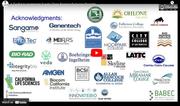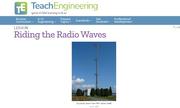
Expanding Hands-On Biotechnology and Biomanufacturing Experience for Diverse Student Populations
ate.is/tquenzer
This project seeks to enhance awareness of career opportunities in Biotechnology and Biomanufacturing among a diverse group of underrepresented community college and high school students. The Bioscience Supply Chain Operations Projects for Education (BioSCOPE) model offers students project-based activities to explore biomanufacturing, acquire hands-on skills, and produce laboratory reagents and consumables meeting industry quality standards and Good Manufacturing Practice. The produced items, often components of laboratory kits, are packaged and distributed to high schools for use in biology and biotechnology classes. Facilitating connections between community colleges and high schools is crucial, fostering awareness and creating pathways for high school students to pursue bioscience courses and programs at the community college level.
This initiative provides students with practical experience, equipping them for entry-level positions in well-paying jobs with opportunities for advancement. Overcoming the fear of science, a common obstacle for many students, particularly those underserved and underrepresented, is a key aspect of this project. Many wrongly assume that a career in life sciences necessitates an advanced degree. BioSCOPE breaks down this misconception, offering hands-on experiences that introduce students to the potential for a fulfilling career in life sciences, particularly appealing to those who enjoy working with their hands. By removing this barrier, BioSCOPE not only benefits students by guiding them towards rewarding, well-paying careers but also contributes to the industry by cultivating an inclusive, diverse, and skilled workforce.







